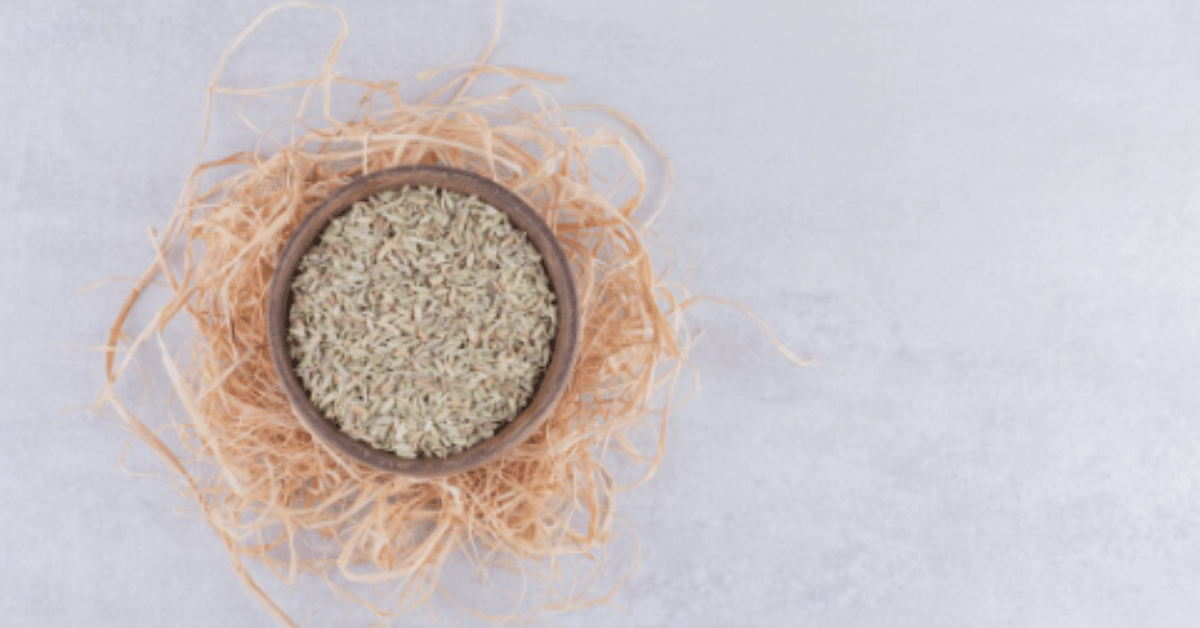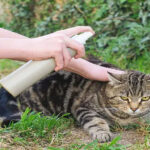Kentucky Bluegrass seed has long been associated with the perfect American lawn — a rich, velvety green carpet that exudes elegance and charm. Gardeners, landscapers, and homeowners alike choose it for its soft texture, brilliant year-round color, and resilience against moderate wear. For many, it’s the gold standard of cool-season grasses, capable of transforming ordinary yards into magazine-worthy landscapes. Whether you’re planting from scratch, overseeding an existing lawn, or restoring a patchy yard, understanding the science, timing, and technique behind Kentucky Bluegrass seed is essential.
In the first 100 words, let’s answer the searcher’s intent clearly: Kentucky Bluegrass seed thrives in cooler climates, offering dense growth and exceptional self-repairing abilities. The key to success lies in proper soil preparation, correct seeding rates, consistent watering, and a patient understanding of its slow germination process. This grass demands more attention at the start but rewards you with unmatched beauty and durability for years to come.
This guide explores everything from seed selection to maintenance strategies, germination timelines, seasonal considerations, and even how to deal with common challenges like pests and drought. We’ll also cover how Kentucky Bluegrass compares to other turf types, so you can make informed choices for your lawn’s specific needs. Along the way, you’ll find practical tips, expert advice, and actionable steps that bring you closer to your dream lawn. As one seasoned turf specialist once said, “Bluegrass is not just planted — it’s cultivated with care and patience.”
Understanding Kentucky Bluegrass Seed Characteristics
Kentucky Bluegrass (Poa pratensis) is a cool-season perennial grass native to Europe and northern Asia but widely adapted to the cooler regions of North America. Its appeal comes from its fine-to-medium leaf texture, deep emerald-green color, and natural rhizome network that allows it to spread underground. These rhizomes make it a self-repairing grass, which is ideal for lawns that endure moderate foot traffic. Unlike many grasses, Kentucky Bluegrass is relatively slow to germinate — often taking 14 to 30 days — but once established, it creates a dense, uniform turf that outcompetes many weeds.
The seed itself is tiny, requiring careful handling during sowing to ensure even distribution. Its shallow planting depth (about 1/4 inch) helps maximize germination rates, but soil contact is crucial. Because of its growth habit, Kentucky Bluegrass prefers full sun but can tolerate light shade. Its peak performance occurs when daytime temperatures range between 60°F and 75°F. It’s also known for its winter hardiness, remaining green during much of the cold season in many regions. As one lawn-care enthusiast remarked, “If patience is a virtue, then growing bluegrass is its ultimate test.”
Soil Preparation for Optimal Growth
Proper soil preparation is the cornerstone of successful Kentucky Bluegrass establishment. This grass type thrives in well-draining, fertile soils with a pH between 6.0 and 7.0. Before seeding, it’s essential to conduct a soil test to determine nutrient levels and acidity. Amending the soil with lime or sulfur can adjust the pH, while compost or well-aged organic matter can boost fertility. A fine, smooth seedbed ensures that seeds make good contact with the soil, which is critical for germination.
Removing debris, old turf, and large rocks will prevent uneven growth patterns. It’s also wise to lightly till or rake the top few inches of soil to encourage root penetration. Compacted soil can be loosened using a core aerator, which enhances oxygen, water, and nutrient movement to the seedling roots. In particularly poor soils, incorporating a starter fertilizer high in phosphorus helps stimulate root growth. Bluegrass’s slow germination period means weeds have time to compete, so pre-planting weed control may be necessary. The extra effort invested in soil preparation pays off in the form of a lush, enduring lawn that thrives season after season.
Best Time to Plant Kentucky Bluegrass Seed
Timing is everything when it comes to establishing Kentucky Bluegrass. The optimal seeding window falls in early fall or late summer when soil temperatures remain warm enough to encourage germination but air temperatures are cooler. This seasonal balance allows seedlings to develop strong roots before winter dormancy. In many northern climates, late August to mid-September offers the ideal planting period.
Spring seeding is possible but comes with challenges. While soil temperatures may be suitable, weed pressure is typically higher, and young seedlings may struggle in the approaching summer heat. If you must plant in spring, early seeding followed by vigilant watering and weed management can help offset risks. Fall-seeded Kentucky Bluegrass often produces thicker turf faster because it benefits from two cool growing seasons — fall and the following spring — before facing summer stress. Understanding your local climate zone is critical to determining the precise planting window for maximum establishment success.
Seeding Rates and Planting Techniques
Achieving an even, dense lawn depends on precise seeding rates and proper planting techniques. For Kentucky Bluegrass, the recommended seeding rate ranges from 2 to 3 pounds per 1,000 square feet for new lawns. Overseeding an existing lawn requires slightly less — around 1.5 to 2 pounds per 1,000 square feet. Over-application can lead to overcrowding, which causes weak seedlings and uneven turf.
Even seed distribution is crucial. Many lawn enthusiasts use a broadcast or drop spreader for accuracy, applying half the seed in one direction and the other half perpendicular to it for consistent coverage. Lightly raking after sowing helps ensure soil-to-seed contact without burying the seed too deeply. Finally, rolling the area with a light lawn roller helps firm the soil, further improving seed contact and germination rates. When combined with a starter fertilizer and adequate watering, this approach promotes uniform growth and minimizes bare spots.
Table 1: Recommended Seeding and Planting Guidelines
| Task | Recommendation | Notes |
|---|---|---|
| Seeding Rate (new lawn) | 2–3 lbs/1,000 sq ft | Prevents overcrowding, promotes healthy growth |
| Seeding Rate (overseeding) | 1.5–2 lbs/1,000 sq ft | Works well for thinning lawns |
| Planting Depth | 1/4 inch | Shallow planting encourages germination |
| Ideal Planting Time | Late summer–early fall | Reduces weed competition |
| Soil pH Range | 6.0–7.0 | Adjust with lime or sulfur as needed |
Watering and Early Care
Water is the most critical element in the early stages of Kentucky Bluegrass establishment. Immediately after seeding, the soil should be kept consistently moist — not waterlogged — to encourage germination. This often requires light watering two to three times per day, depending on weather conditions. Once seedlings reach about two inches in height, gradually reduce watering frequency while increasing the depth of each watering. Deep watering encourages roots to grow deeper into the soil, making the grass more drought-resistant.
Overwatering during germination can cause seeds to rot or encourage fungal diseases. Conversely, allowing the soil to dry out can halt germination entirely. Using a fine mist setting on your sprinkler helps avoid seed displacement. Mulching lightly with straw can help retain moisture, regulate temperature, and prevent erosion. The first mowing should occur when grass reaches 3–4 inches in height, ensuring mower blades are sharp to prevent tearing delicate young plants.
Fertilization Strategies for Healthy Growth
Fertilizing Kentucky Bluegrass is about balance — too much nitrogen can lead to excessive leaf growth at the expense of roots, while too little can cause weak turf. A starter fertilizer with a higher phosphorus content is beneficial during establishment, as it stimulates strong root growth. Once established, nitrogen becomes the primary nutrient requirement.
A general rule is to apply 2–4 pounds of nitrogen per 1,000 square feet annually, divided into multiple feedings. The best times for nitrogen applications are in early fall and late spring. Avoid heavy summer fertilization, as it can stress the grass during heat waves. Organic fertilizers, such as composted manure, offer slow-release benefits and improve soil health over time. Soil testing every 1–2 years helps fine-tune your fertilization plan and ensures nutrients remain in optimal balance for long-term turf health.
Table 2: Annual Fertilization Schedule for Kentucky Bluegrass
| Season | Nitrogen (lbs/1,000 sq ft) | Purpose |
|---|---|---|
| Early Spring | 0.5–1.0 | Promote early green-up |
| Late Spring | 0.5–1.0 | Support active growth |
| Early Fall | 1.0–1.5 | Build root reserves before winter |
| Late Fall | 0.5–1.0 | Encourage winter hardiness |
Weed and Pest Management
Weeds can quickly outcompete Kentucky Bluegrass seedlings if left unchecked. The most common invaders include crabgrass, dandelions, and chickweed, which thrive in disturbed soil. Preventing weed growth begins before seeding with proper soil preparation and possibly the application of a pre-emergent herbicide — though these must be timed carefully to avoid affecting grass germination. Hand-pulling weeds in the early stages is an effective and safe option for smaller lawns.
Pests such as white grubs, sod webworms, and billbugs can damage roots or blades, causing thin patches and discoloration. Monitoring for early signs of infestation, such as irregular brown patches or spongy turf, is crucial. Biological controls, like beneficial nematodes, offer eco-friendly pest suppression. For severe infestations, targeted insecticides may be necessary, but these should be applied cautiously to avoid harming beneficial soil organisms. Healthy, dense Kentucky Bluegrass naturally resists many weed and pest problems, underscoring the importance of consistent maintenance practices.
Overseeding and Lawn Repair
Even the healthiest Kentucky Bluegrass lawns develop thin areas over time, whether due to heavy foot traffic, pet damage, or environmental stress. Overseeding — the process of spreading new seed over existing turf — rejuvenates lawns without the need for complete renovation. Early fall is the ideal time for overseeding, allowing young seedlings to establish before winter.
Before overseeding, mow the existing grass shorter than usual and rake away clippings and debris to improve seed-to-soil contact. A light application of starter fertilizer enhances germination success. Applying seed at a rate of 1.5 to 2 pounds per 1,000 square feet is usually sufficient. Lightly water the area daily until seedlings reach mowing height. Overseeding every two to three years can help maintain a dense, vibrant lawn that recovers quickly from wear.
Seasonal Maintenance for Kentucky Bluegrass
Caring for Kentucky Bluegrass requires adjusting maintenance strategies to seasonal changes. In spring, focus on fertilization, light overseeding, and weed prevention. This is also the time to inspect for winter damage and begin gentle mowing.
Summer demands careful water management. Kentucky Bluegrass can enter a dormant state during prolonged heat, turning brown but surviving underground. Deep, infrequent watering helps maintain green color and reduces stress. Avoid heavy fertilization during this season, as it can increase susceptibility to disease.
Fall is the most important season for feeding, aeration, and seeding. This period supports root development before winter dormancy. Winter care involves minimizing foot traffic on frozen turf and avoiding salt runoff from driveways and sidewalks, which can damage grass. A year-round approach ensures Kentucky Bluegrass remains healthy, resilient, and visually appealing across all four seasons.
Kentucky Bluegrass vs. Other Turf Types
When deciding whether Kentucky Bluegrass is the right choice, it’s helpful to compare it with other popular turf varieties. Tall fescue, for example, germinates faster and tolerates heat better but lacks the fine texture and spreading ability of bluegrass. Perennial ryegrass establishes quickly and offers a deep green color but is less hardy in extreme cold.
Kentucky Bluegrass excels in self-repair due to its rhizome growth, giving it a long-term advantage in maintaining a uniform lawn. However, it demands more patience during establishment and requires consistent fertilization to achieve its signature lushness. Blended seed mixes that combine bluegrass with ryegrass or fescue often offer the best of multiple species — fast establishment from ryegrass, durability from fescue, and beauty from bluegrass. The choice ultimately depends on climate, intended use, and personal preference.
Common Problems and Solutions
Even the most carefully maintained Kentucky Bluegrass lawns can face challenges. Thatch buildup — a layer of dead grass and roots — can suffocate turf and block water penetration. Annual dethatching or core aeration helps break down this layer.
Disease is another concern. Leaf spot, dollar spot, and powdery mildew are common fungal issues, often caused by excessive moisture or poor air circulation. Adjusting irrigation schedules, mowing to the correct height (2.5 to 3.5 inches), and improving drainage can help prevent outbreaks.
Drought stress can cause Kentucky Bluegrass to brown prematurely. While it can survive dormancy, supplemental watering during prolonged dry spells maintains better aesthetics. Salt damage from winter de-icing can be mitigated by using calcium-based products instead of sodium chloride and flushing affected areas with water in spring.
Expert Tips for Success
Long-term Kentucky Bluegrass success depends on small but significant adjustments to your lawn-care routine. Always sharpen mower blades to prevent tearing grass blades, which can increase disease risk. Rotate mowing patterns to avoid soil compaction and uneven wear. Test soil annually and adjust fertilization based on results rather than guesswork.
One experienced groundskeeper from a Midwest university lawn program shared this insight: “People think bluegrass lawns just happen, but it’s a year-round commitment. A little extra effort every season prevents most problems before they start.” Another professional landscaper adds, “If you want your lawn to be the envy of the neighborhood, focus on root health, not just the blades you see.”
These expert perspectives emphasize that Kentucky Bluegrass rewards dedication, offering a lush, resilient, and beautiful turf that elevates any property.
Conclusion
Kentucky Bluegrass seed remains one of the most coveted choices for homeowners and professionals seeking a premium lawn. Its unmatched beauty, dense growth, and ability to self-repair make it a standout among cool-season grasses. Success with Kentucky Bluegrass begins with understanding its slower germination, precise planting requirements, and need for consistent care. From soil preparation and fertilization to seasonal maintenance and pest management, each step plays a critical role in achieving a thriving lawn.
While it demands more patience and attention than some alternatives, the rewards are worth the investment. The rich green carpet it produces offers a timeless elegance that complements any landscape. When managed with knowledge and care, Kentucky Bluegrass can flourish year after year, transforming ordinary yards into extraordinary outdoor spaces. Whether you’re starting a new lawn or revitalizing an existing one, following the guidelines in this article will help you cultivate a lawn that is not only visually stunning but also resilient and long-lasting — a true reflection of the enduring charm of Kentucky Bluegrass.
FAQs
1. How long does Kentucky Bluegrass seed take to germinate?
It typically takes 14–30 days, depending on soil temperature, moisture levels, and seed quality.
2. What is the best time to plant Kentucky Bluegrass seed?
Late summer to early fall offers the best combination of warm soil and cool air for strong root development.
3. How often should I water Kentucky Bluegrass during establishment?
Lightly water 2–3 times daily until seedlings reach about two inches tall, then reduce frequency but deepen watering.
4. Can Kentucky Bluegrass grow in shaded areas?
It prefers full sun but can tolerate light shade; however, growth may be thinner in low-light spots.
5. How much seed should I use for overseeding?
Apply 1.5–2 pounds per 1,000 square feet for even coverage and healthy lawn rejuvenation.











